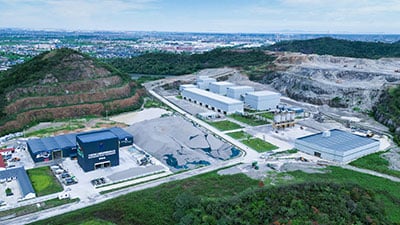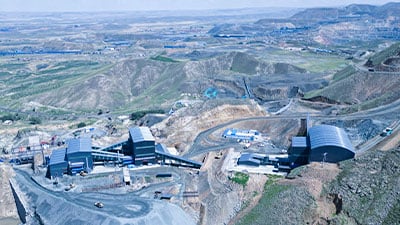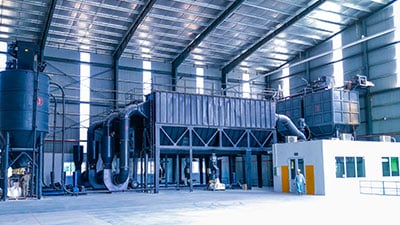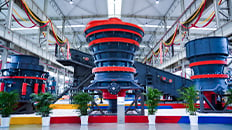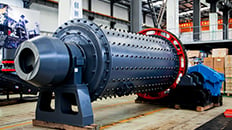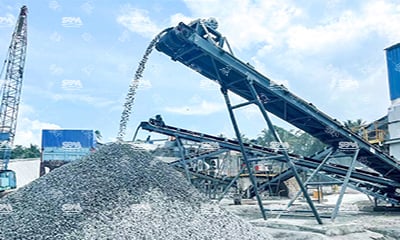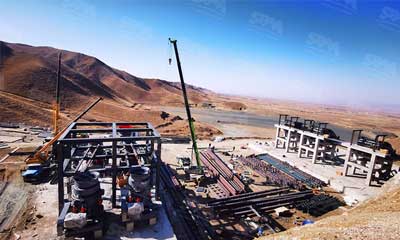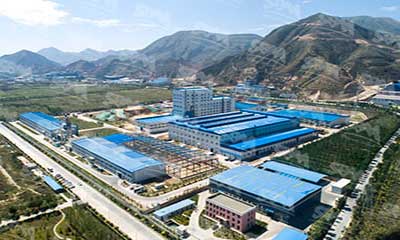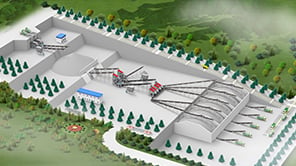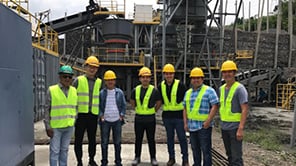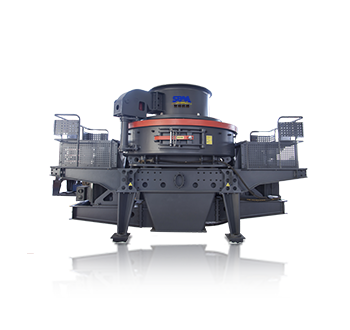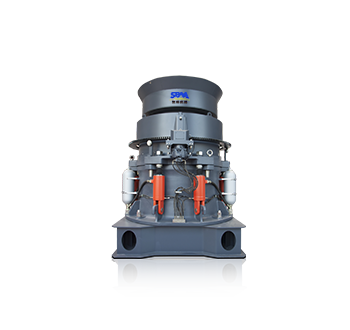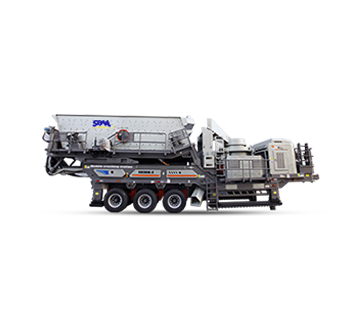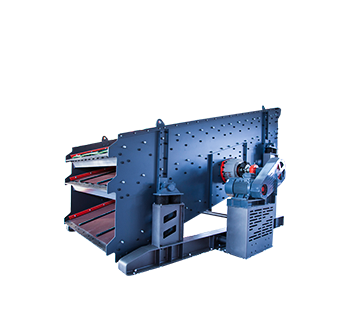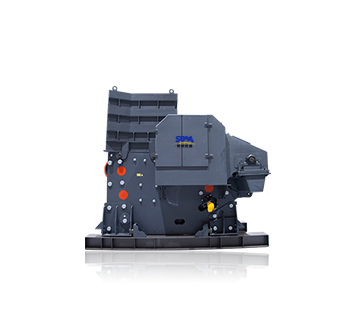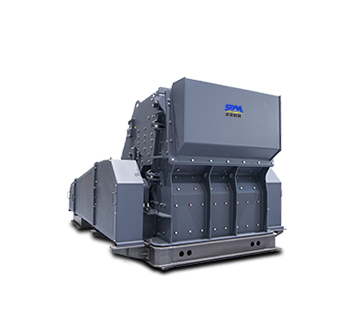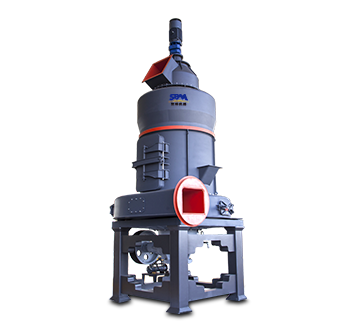Summary:Stone crusher is essential for the processing of minerals in mining. They are used to reduce the size of large rocks into smaller, more manageable materials for various industrial applications.
Mining is one of the most essential industries globally, providing resources that are foundational to construction, manufacturing, and various other sectors. Among the many essential pieces of equipment used in the mining industry, stone crushers are indispensable. These machines are designed to break down large pieces of rock into smaller, manageable fragments, making them a crucial component of the mining process. In this article, we explore the key benefits and applications of stone crushers, highlighting their importance in mining operations.
Introduction to Stone Crusher in Mining
Stone crusher is essential for the processing of minerals in mining. They are used to reduce the size of large rocks into smaller, more manageable materials for various industrial applications. The types of stone crushers used in mining depend on the size, hardness, and type of material being crushed. They can be categorized as jaw crushers, cone crushers, impact crushers, and hammer crushers, each with specific advantages suited to different crushing requirements.
The key purpose of stone crusher is to facilitate the extraction of valuable minerals by reducing large ore deposits to smaller fragments. These smaller fragments are easier to transport, process, and refine, ensuring the efficient extraction of minerals and the production of usable raw materials.

Applications of Stone Crusher in Mining
Stone crusher plays a pivotal role in various stages of the mining process. Below are some of the main applications of stone crushers in mining:
1. Primary Crushing
Primary crushing is the first step in the material reduction process, where large rocks are broken down into smaller, more manageable pieces. Jaw crushers are commonly used for primary crushing due to their ability to handle large, hard materials. The primary crushing process prepares the material for further processing by reducing it to a size that can be easily processed by secondary crushers.
2. Secondary and Tertiary Crushing
Once the material has been reduced to a smaller size through primary crushing, it undergoes secondary and tertiary crushing stages. Cone crushers, impact crushers, and hammer crushers are often used in these stages to achieve finer material sizes. Secondary and tertiary crushers help refine the material further, preparing it for use in construction, cement production, or other applications.
3. Ore Processing
Stone crushers are used in ore processing to reduce large ore deposits to smaller sizes, allowing for the extraction of valuable minerals like gold, copper, and iron. Crushing the ore into smaller fragments makes it easier to separate the desired minerals through methods such as flotation, gravity separation, or smelting.
4. Aggregate Production
In addition to mining ores, stone crushers are also used in the production of aggregates. Aggregates such as gravel, crushed stone, and sand are essential materials used in construction, road building, and other industries. Stone crushers break down rocks into smaller aggregates, ensuring a steady supply of these materials for construction projects.
5. Construction Materials
Stone crushers are critical in producing construction materials like crushed stone, gravel, and sand. These materials are used in the construction of roads, buildings, bridges, and other infrastructure projects. The materials produced by crushers must meet specific standards for size, shape, and durability, ensuring that they are suitable for construction purposes.
6. Road Construction
In road construction, stone crushers are used to produce high-quality aggregates for roadbase materials, asphalt, and concrete. Crushed stone and gravel are mixed with other materials to create strong, durable road surfaces that can withstand traffic and environmental conditions.
7. Cement Production
Cement production relies on stone crushers to supply crushed limestone, gypsum, and other raw materials used in the manufacturing of cement. The crushed materials are ground into fine powders and mixed to create the final cement product. Stone crushers play an essential role in preparing the raw materials for cement production.
Types of Stone Crushers Used in Mining
Different types of stone crushers are used in mining, each with its unique features and applications. The main types of crushers include:
1. Jaw Crusher
Jaw crusher is typically used in the primary crushing stage. They work by applying compressive force to break down large rocks. Jaw crushers are ideal for handling hard and abrasive materials like granite, basalt, and ore. They are commonly used in mining operations where high reduction ratios are required.
2. Cone Crusher
Cone crusher is used in secondary and tertiary crushing stages. They operate by crushing material between a moving cone and a stationary cone, and they are particularly effective for reducing ore sizes. Cone crushers are used in mining for their high efficiency and ability to produce uniform, fine-sized material.

3. Impact Crusher
Impact crusher use impact force to break down materials. They are commonly used for softer rocks like limestone and gypsum. Impact crushers are highly effective in producing fine materials with excellent shape and consistency.
4. Mobile Crusher
Mobile crusher is versatile and can be used in various stages of crushing. These crushers are mounted on tracks or wheels, allowing them to be easily moved to different locations within a mining site. Mobile crushers are ideal for processing materials on-site, reducing the need for transportation and increasing operational efficiency. They are particularly effective for processing materials in remote or hard-to-reach areas, offering flexibility and convenience in mining operations. Mobile crushers are commonly used for both primary and secondary crushing.
Key Benefits of Stone Crusher in Mining
Stone crushers offer numerous benefits that improve the efficiency and profitability of mining operations. Some of the key benefits include:
1. Increased Productivity
Stone crushers significantly increase productivity by reducing the time and effort needed to process large rocks. Crushers break down hard materials quickly, allowing miners to extract valuable minerals faster. This leads to a more efficient mining process and a higher output of usable materials.
2. Improved Material Handling
Large rocks can be challenging to transport and handle. Stone crushers reduce these materials to smaller sizes, making them easier to move and manage. The reduction in material size facilitates smoother transportation, handling, and processing at different stages of the mining operation.
3. Versatility in Material Processing
Stone crushers can handle a wide range of materials, including hard ores like granite, basalt, and iron ore, as well as softer materials like limestone and gypsum. They are versatile machines that can be used for primary, secondary, and tertiary crushing processes, depending on the type of material being processed.
4. Enhanced Operational Efficiency
By using stone crushers, mining companies can optimize their operations and achieve more efficient processing. Crushers help minimize wastage and ensure that valuable minerals are extracted in the most cost-effective way possible. As a result, mining operations are more streamlined, and companies can achieve greater returns on their investments.
5. Energy Efficiency
Many modern stone crushers are designed with energy efficiency in mind. Advanced crushers use less power and consume fewer resources while maintaining high performance. By using energy-efficient machines, mining operations can reduce operational costs, lower energy consumption, and reduce their carbon footprint.
6. Reduced Labor Costs
Using stone crushers reduces the need for manual labor in breaking down large rocks. The automation of crushing processes reduces the number of workers required on-site, lowering labor costs and enhancing safety. Additionally, automation improves precision, reducing the likelihood of errors and inconsistencies in the crushing process.
7. Enhanced Safety
Stone crushers help improve safety in mining operations by minimizing manual labor and the risks associated with handling large, dangerous rocks. With the use of machinery, workers are less exposed to hazardous working conditions, and the risk of accidents or injuries is reduced. Many modern crushers come with built-in safety features like emergency stops, guarding, and automatic shutdown systems.
Stone crushers play a vital role in mining operations, helping to break down large rocks into smaller, manageable fragments that are essential for further processing. By selecting the appropriate type of crusher, ensuring efficient operation, and considering safety and environmental factors, mining operations can achieve optimal crushing performance while minimizing operational costs. As technology advances, the efficiency and performance of stone crushers continue to improve, providing miners with the tools they need to stay competitive in a rapidly evolving industry.

